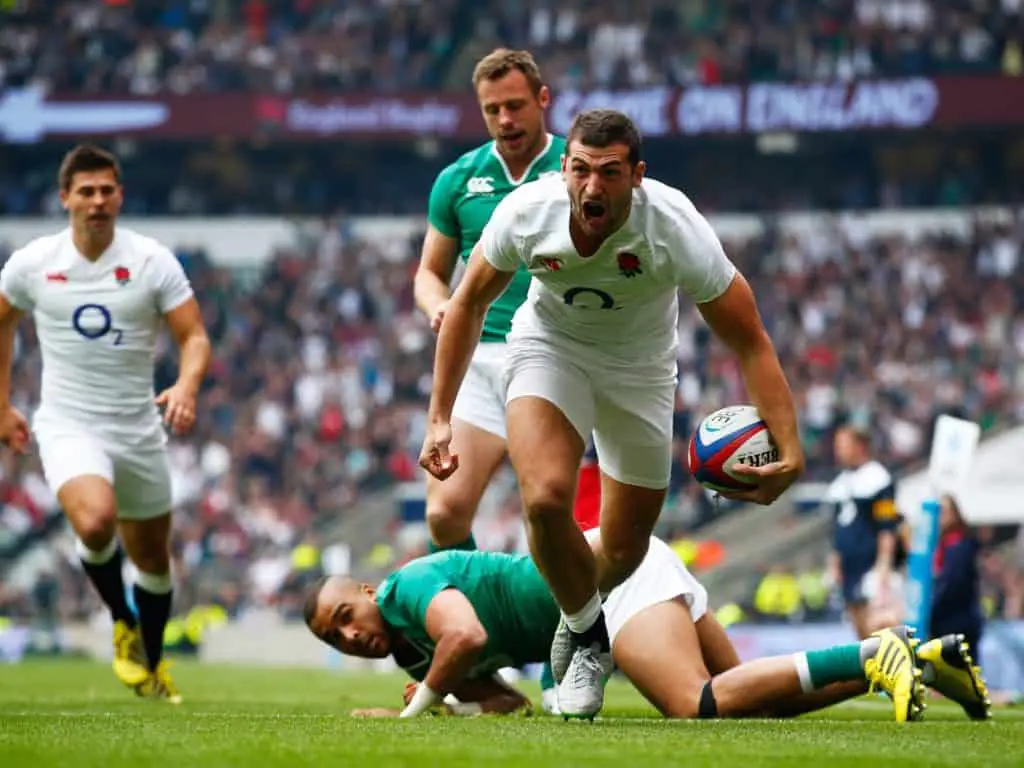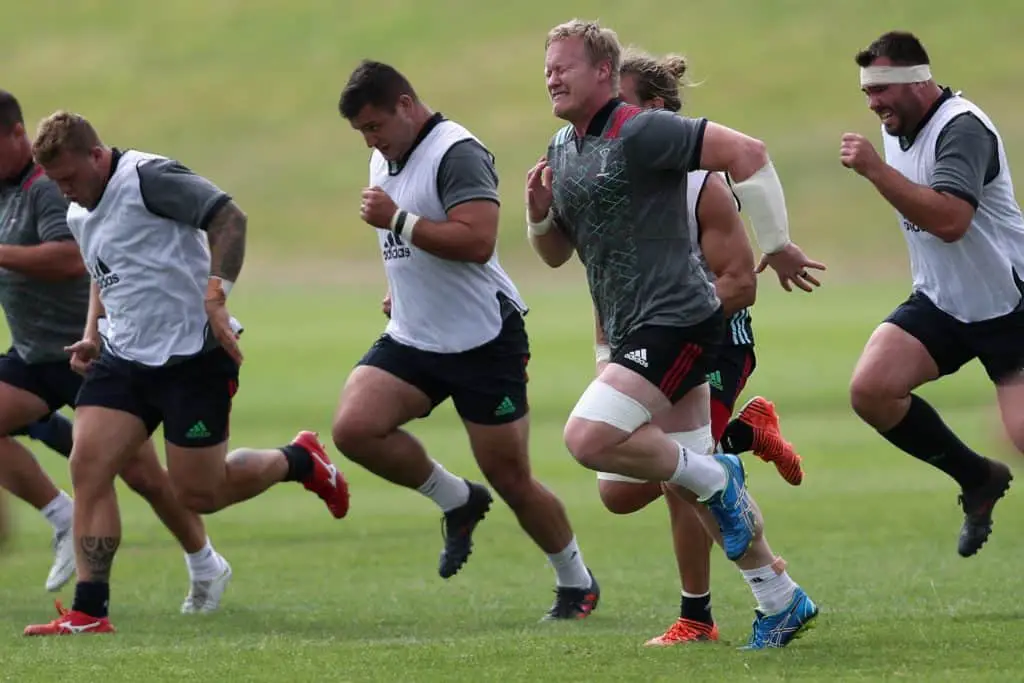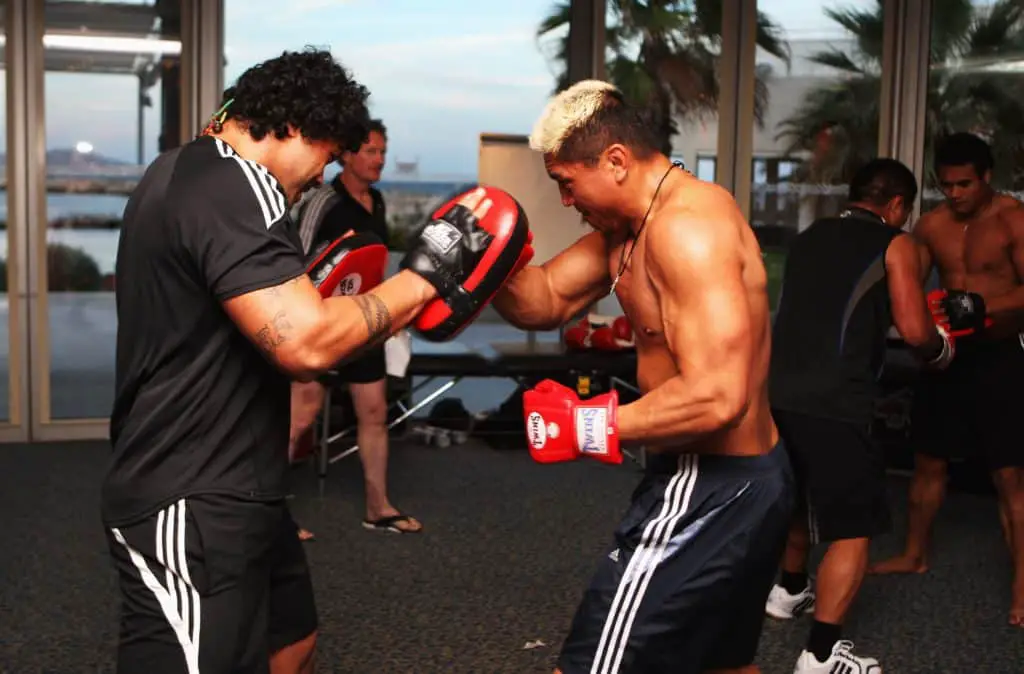You have probably just wound up a tough and grueling rugby match and are now feeling pretty knackered. You know you would be such a better rugby player if you just could supercharge your cardio. I will show you some quick easy tips which will have you sprinting up and down the field for the whole game.

How to increase my cardio for rugby? To increase your cardio for rugby you must breathe properly, learn how to conserve your energy, use efficient technique, increase your training intensity and do extra cardio outside your regular rugby training. These tips will turn you from a zero to a hero in short order.
How to Breathe During Rugby?

You may be shocked to know that you probably have much more cardio than you think. The reason you are likely getting tired during rugby is because you do not know how to breathe properly. During a rugby match you are caught up in tackling, cleaning out and running with the ball that the stress of the game can cause you to hold your breath for prolonged periods of time.
It is common for you to only start sucking air and taking big breaths after your body is already redlined and screaming for oxygen. Unfortunately, by this time it is too late for your body to recover and exhaustion will set in.
To prevent your body redlining you need to take continual, deep and relaxed breaths for the whole of your rugby match. You need to take relaxed slow deep breaths through your nose and exhale through your nose. If you find you need more oxygen then you can try exhaling through your mouth. If you still need more oxygen then you should be inhaling and exhaling through your mouth. Once you have caught your breath return to breathing in and out through your nose.
By fixing your breathing you will be shocked how much your cardio improves. This a simple tip which will instantly boost your cardio.
After you have got the hang of the aforementioned breathing technique you can have a crack at a more advanced breathing method. Just before you make an explosive movement you will want to breathe in through your nose and then as you come towards the end of your explosive movement you want to quickly exhale multiple times through your mouth or nose. Boxers use this same technique. If you have ever watched boxing you will have heard that shoosh sound every time they throw a punch, this caused by the boxer exhaling everytime he throws a strike. Try this advanced technique out and I can guarantee you will be able to increase your cardio for rugby.
How To Conserve Energy During Rugby?

The amount of cardio you have isn’t always the problem. Often you just don’t know how to manage and utilize it effectively. As mentioned above breathing correctly is one method to conserve your energy but there are a few more methods you can implement.
Using efficient technique will conserve your energy. The techniques in rugby are physically taxing enough when they are done correctly. So don’t make your life harder by performing them with poor technique. Trying to lift a lineout jumper with your arms, cleaning out with a bent back or tackling with your shoulder but not driving with your legs are common mistakes beginner rugby players make. These mistakes make rugby more physically taxing then it should be and often lead to injuries. Instead of focusing on raw strength to dominate and control your opponent focus on performing the techniques with textbook form.
Another way to conserve your energy is picking and choosing when to use your speed and explosive power. There are times in rugby when using explosiveness is effective and times when it is just a waste of time. For example if you are 20m away from a ruck there is no point sprinting over there until you are a red in the face because even if you are Usain Bolt by the time you will arrive you won’t be able to make a meaningful impact. Now if you are taking a hit up then sure run it up as hard as you can. By picking and choosing your moments your cardio will last a lot longer.
How To Increase Your Rugby Training Intensity?

To increase your cardio for rugby you need your body to change and transform. This occurs through placing your body under stress which tricks your body into thinking it must adapt to the new stress if it wants to survive. To create an effective stress you must overload your body. This can be achieved by ramping up your training volume. If you typically have 2 rugby sessions and a game on the weekend, increase your training volume to 3 rugby 3 sessions a week plus 1-2 conditioning workouts. Your body will have to respond to this increased training volume by increasing your cardio capacity.
A similar yet slightly different way to cause adaptation in your body is to increase the length of your rugby sessions. If your rugby training typically lasts for 1.5 hours stay back an extra 30 mins and do some of your own training or ask your teammates if they want to do some extra drills with you.
Finally you can give your cardio a boost by training harder. Next time you are at rugby practice, make every drill and exercise you do as difficult as possible, strive for perfection. Don’t take it easy when you’re running laps of the oval, don’t go 80% on sprints and don’t just jog when taking hit ups on the tackling shields. If you take this advice your body will be forced to adapt to the increased stress resulting in you receiving a boost to your cardio.
Cardio Training Outside Rugby Training

The best way to increase your cardio for rugby is to simply train more rugby. However, as rugby is a teammate sport it isn’t always possible to find training partners or extra matches. You can boost your cardio by doing non rugby training. The best form of cardio for rugby would be in sports which are similar to rugby such as wrestling. Wrestling is a great way to not only improve your cardio but also your tackling technique. I would recommend adding 1-2 sessions of wrestling into your training routine. Your cardio will be supercharged if you train in any sport that results which forces your heart rate into the training zone (80% of HR max) for a prolonged period of time.
What you decide to do for cardio outside of your rugby training comes down to what you enjoy. Boxing, running, kettlebells, skipping and swimming can all boost your cardio if you train them hard enough and consistently. If you are training in swimming, kettlebells or running you should focus on sprints and short periods of explosive movement followed by short periods of rest to mimic the type of cardio you need during a rugby game. I am a big believer in specificity so I would recommend first training more rugby, then wrestling and then whatever you enjoy the most.
Conclusion
By focusing on your breathing, knowing when to use your energy, using correct technique and doing a bit of extra cardio outside your normal rugby sessions you will see a significant bump to both your stamina and conditioning and you will be smashing the opposition in no time.
